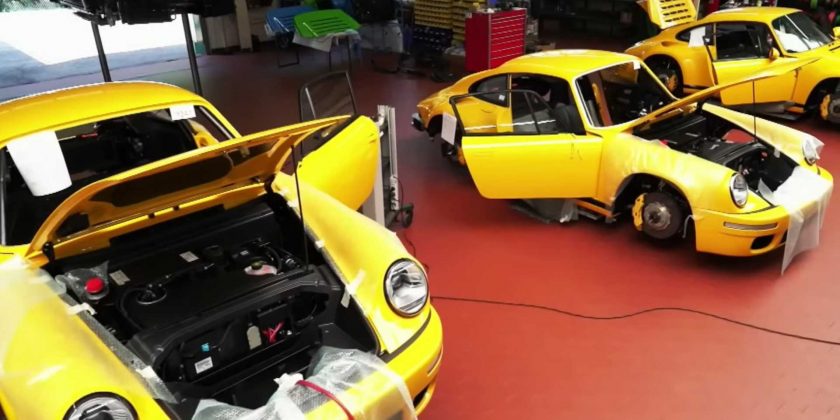Perhaps not many of you know that Ruf Automobile – more commonly known as simply Ruf – was founded in 1939 in Germany and initially offered only vehicle maintenance and repair. Experiments with new vehicle designs didn’t start until the late 1940s and it wasn’t until 1955 that the first Ruf-branded product was marketed around the German market. However, it wasn’t a car but a tour bus, which got positive feedback from customers and Ruf decided to expand its business and start a separate owner bus company.
This was the very beginning of a company known today as one of the leading aftermarket tuning firms when it comes to Porsche models. Germany’s Welt has a new 50-minute documentary telling the story of Ruf and how it became famous with the Ruf CTR, which was the fastest production vehicle in the world when it made its debut in 1987. But before the Yellowbird made Ruf famous, the company had several other successful attempts at making fast Porsches.
Gallery: Ruf CTR Anniversary Production Version
It all started in 1977 when the first complete Porsche model by Ruf was completed, featuring a modified 3.3-liter engine. In the following year, the Ruf 911 SCR debuted as the first non-turbo model of the company, equipped with a naturally aspirated 3.2-liter motor. As mentioned, however, Ruf went from being popular in Germany to worldwide recognition in 1987 with the Ruf CTR.
In the year it was released, the CTR registered a top speed of 211 miles per hour (339 kilometers per hour), which made it the world’s fastest production car for its time. A year later, an even higher speed of 213 mph (342 kph) was achieved and Ruf released a video of the car lapping the Nurburgring, which quickly became popular around the world. Footage from that video is also featured in Welt’s documentary, attached at the top of this page.
Most recently, Ruf unveiled the SCR at the 2018 Geneva Motor Show. Looking a lot like the classic Porsche 911 from the 964 generation, it had a full carbon fiber monocoque chassis and bodyshell. A heavily modified 4.0-liter naturally aspirated engine with 503 horsepower (375 kilowatts) and 347 pound-feet (470 Newton-meters) was under the hood, giving the SCR a top speed of 199 mph (320 kph).
Source: Welt on YouTube
Source: Read Full Article

